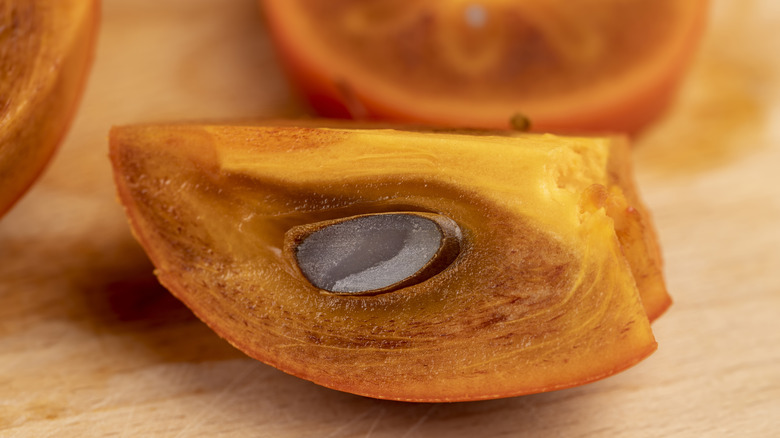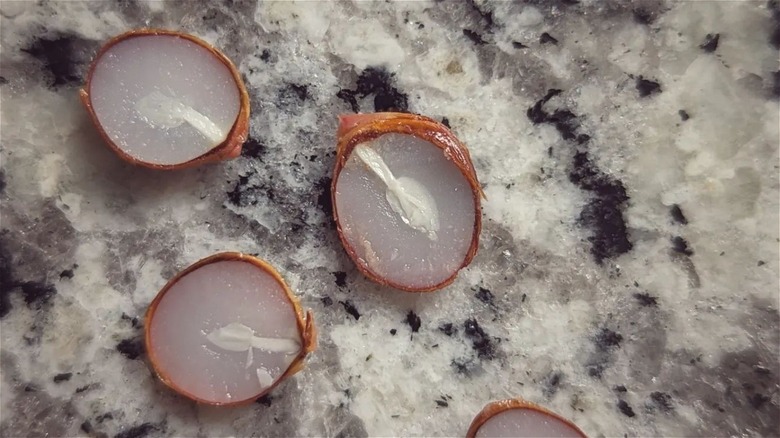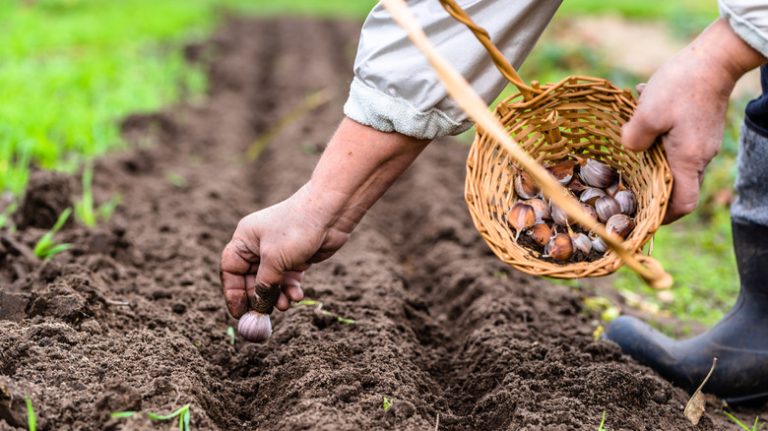Although we have science-based weather prediction centers like the National Oceanic and Atmospheric Administration (NOAA), some folks still like to look to the old ways to prepare for winter weather. One common piece of folklore states that if the wooly bear caterpillar has an extra-wide band of brown in the middle of its body, the winter will be mild. Another method of prediction that makes its way around during the fall involves the common persimmon tree (Diospyros virginiana), whose seed is used to predict how bad the winter may be. While this myth may be believed by some, it’s not based in fact and may not be an accurate predictor of upcoming weather.
Common persimmons are native to the southeastern portion of the United States, but these fruit trees are hardy up to zone 4. They are easy to grow, attractive, and provide a source of food for humans and wildlife. You are unlikely to find persimmon fruits at your local grocery store, although you might get lucky and find some at a farmer’s market. This is because persimmons are only edible when they are fully ripe, and biting into one of these fruits prematurely will leave you with an astringent taste in your mouth that you will not soon forget. Since these small orange fruits are very soft when they are ripe enough to eat, they do not travel well. Packing up a crate of edible persimmons might leave you with a pile of mush when you reach your destination.
Reading the seeds

We don’t know with certainty where using persimmon seeds to predict winter weather originated, but it is thought to have begun in the Ozarks. For generations, the symbols held within a persimmon seed have been used to prepare for either a mild winter or extra snow. The seeds are cut in half, and the white portion in the center is studied to see whether it looks like a knife, fork, or spoon. These predictions were only considered accurate if you were using local persimmons. A seed from Tulsa would not be a good way to forecast the winter in Atlanta.
If you believed the lore behind reading persimmon seeds, you would probably hope to find a fork shape. This indicates a mild winter with light snow. A knife predicts cold, icy days with such bitter cold that it cuts like a knife. Between the moderate winter temperatures represented by forks and a miserably cold season anticipated by observing a knife, you may find a spoon. This shape represents lots of snow to shovel. Using a spoon for driveway snow removal seems like a lot of work, but that’s how the story goes.
Do persimmon seeds predict winter weather?

bekagarris / Instagram
Just like with other forms of folklore, there is no scientific evidence that persimmon seeds can actually predict a certain kind of winter. In fact, you can get seeds from three fruits off the same tree and get three different shapes. Even though we have far better ways of anticipating the upcoming season, it’s still fun to revisit these old methods to connect us to our history.
If you can find local persimmon fruits, open them up and remove the seeds inside. Slice the seed open longwise from top to bottom and see what shape you get. Will everyone in the family get the same thing? Maybe seeing multiple knives will make you want to prepare for the theoretically-impending cold. Kids could certainly get excited about the possibility of extra snow days if they see a spoon. This decidedly-unscientific way of predicting the winter may not be the most accurate, but it is definitely fun. You could also get the bonus of trying a new fruit, and we hear that persimmon cookies are very tasty.



